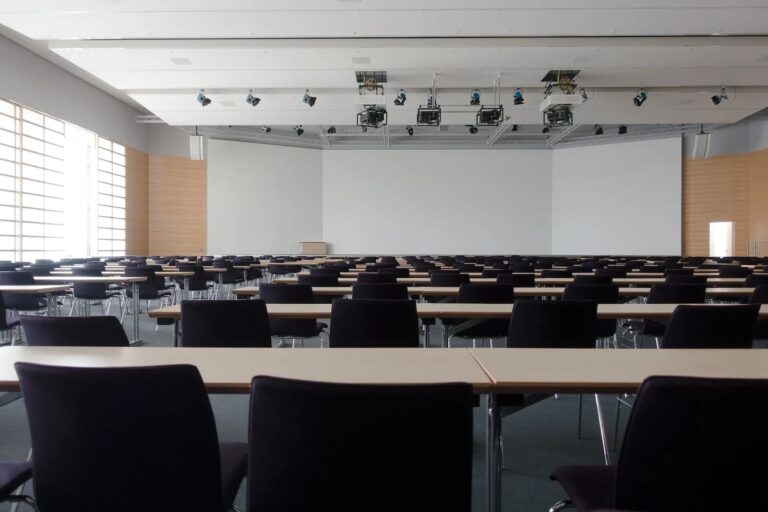Office Space: Evaluating 5 Types of Office Environments
Your workspace is important to your overall satisfaction with your job and productivity. You can accomplish tasks more quickly and efficiently in a workspace where you’re able to focus. If privacy is an issue in your office environment, you’re more likely to struggle with completing work. Even though companies like Google and Facebook champion open office spaces, they have their drawbacks. What are some of the keys to maintaining a productive work environment?
How Office Environments Affect Employees
Most companies approach workplaces the way they do employee salary and benefits. They weigh the quality of the work environment against cost. Management typically assumes that every employee wants the most space and best views possible. But focusing on just those two criteria ignores the numerous effects office environments can have on employees.
Productivity
A study cited in U.S. News & World Report had 600 software developers in 92 different companies complete the same series of coding and testing tasks. Each developer had to keep a log of the amount of time it took to complete the tasks. The study found that the programmers in the top quartile were 2.1 times more productive than the average programmer and outperformed the worst programmers by a ratio of 10 to 1.
The greatest similarity among the best programmers was quality workspace. Nearly 60 percent of participants in the top quartile were satisfied with the level of quiet in their workspace. These programmers were also satisfied with their privacy and ability to divert their calls in their offices. Meanwhile, less than 20 percent of programmers in the bottom quartile worked in that kind of office space.
Privacy
There is evidence to show that a lack of privacy can have an effect on employees as well. A study published in the Journal of Environmental Psychology found that noise and privacy loss are among the main sources of workspace dissatisfaction. Furthermore, enclosed private offices outperformed open-plan office layouts in acoustics, privacy and proximity issues.
Health
Open-plan offices can increase the spread of germs. A study of more than 2,400 employees found that those working in open offices take 62 percent more sick days than those in individual offices. This hurts productivity even further and can cost the company significant money.
Survey of 5 Office Environments
With companies utilizing many different kinds of office environments, some management teams have lost sight of what may be best for their employees in a quest to follow the latest trends. Each of these five office environments offers its own unique strengths and weaknesses.
1. Private Offices
Private offices are the best choice for privacy in the workplace, offering a quiet place for employees to make calls and hold meetings without distractions. Typically, these are reserved for upper management due to high costs. However, introducing shared private workspaces can be a cost-effective alternative. This approach gives all employees access to a private area, helping to increase focus and boost productivity throughout the team.
2. Open Offices
According to The Washington Post, about 70 percent of U.S. offices follow the open office format with no or little partitions. The start of this trend certainly came from the tech companies in Silicon Valley, which boast that open office plans offer unparalleled interaction and transparency. What began on the West Coast spread across the country and into companies in all industries.
Open office plans are great for saving space and reducing costs, but they might not be as beneficial for productivity as once thought. According to research from Cambridge, nearly half of all employees report issues with sound privacy. Over 30% are concerned about the lack of visual privacy in these environments. Surprisingly, less than 10% feel these layouts improve ease of interaction. People in private offices, on the other hand, report fewer communication problems, challenging the notion that open offices enhance collaboration.
3. Cubicles
Cubicles, often viewed as a middle ground between private offices and open plans, still grapple with many of the same issues. Noise is a significant problem, making it hard to conduct private phone calls and easy to disturb colleagues with nearby conversations. Visual distractions are common too, particularly in cubicles with low partitions, where the simple act of people walking by can be distracting.
Despite these drawbacks, cubicles offer considerable cost savings. To improve the situation, companies can provide access to private offices and create meeting spaces. These additions not only address privacy concerns but also break the monotony of working in a cubicle, potentially boosting employee morale and productivity.
4. Remote Work
According to an article from Forbes, about 20% of the workforce is now engaging in remote work, underscoring a significant shift in how companies and employees view productivity and workplace flexibility. This trend continues to grow, influenced by the widespread recognition of the benefits of telecommuting. Studies, such as one from the Harvard Business Review, have shown that remote workers often experience higher productivity and job satisfaction. Additionally, businesses that adopt remote work models report substantial savings on office space and furniture.
Despite its advantages, remote work isn’t without challenges. It may not suit roles that require extensive interaction among employees, like those in creative fields. However, it offers a valuable alternative for older employees or those who need more flexibility to balance work with home life, proving that remote work can be a robust option for many.
5. Coworking Spaces
Membership-based workspaces bring together freelancers, remote workers, and independent professionals in a dynamic, community-focused environment. These spaces attract members who value collaboration, independence, and a shared sense of purpose.
Coworking spaces are designed for flexibility. They’re accessible 24/7, allowing members to work on their own schedules or take breaks as needed. With options like private desks, enclosed offices, and shared tables, they support both focused work and easy communication. This variety fosters collaboration and makes idea-sharing seamless.
While coworking spaces are perfect for individuals and small teams, they’re less suited for large businesses. Instead, they cater to those seeking a supportive network and a productive, creative atmosphere that goes beyond traditional office settings.
Lead Workplace Success with Industrial-Organizational Psychology
Industrial-organizational psychology focuses on helping employees excel by improving productivity, refining workflows, and fostering better workplace dynamics. At Touro University Worldwide, you can develop the expertise to tackle these challenges head-on with an online graduate degree in industrial-organizational psychology. This program empowers you to become a business leader who understands the complexities of today’s office environments. You’ll gain the tools to create more efficient teams, enhance employee satisfaction, and drive meaningful change in any organization.





